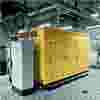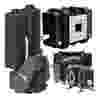Hibon offers an extensive and complete range of reliable technological solutions designed to meet various industrial needs. Our portfolio includes:
Vacuum Pumps: Efficient solutions for creating high vacuum conditions with precision.
Positive Displacement Blowers: Effective for both air and gas applications requiring consistent pressure and flow.
Truck Positive Displacement Blowers: Specialized blowers designed for truck-mounted units, ensuring mobility and reliability.
Rotary Air Blowers: Ideal for different airflow applications, providing clean and robust performance.
Rotary Gas Blowers: Engineered to handle various gases, delivering efficient and safe operation.
Rotary Lobe Blowers: Versatile for both air and gas applications, known for their durability and reliability.
Rotary Pumps: High-performance rotary pumps for various industrial applications.
Truck Blowers: Robust and reliable solutions for truck-mounted operations.
Air Blower Units in Package: Comprehensive air blower packages tailored to specific needs.
Gases Blower Units in Package: Complete packages designed for handling gases efficiently.
Our high vacuum solutions are capable of reaching pressures up to 100 mbar.
Hibon's rotary lobe blowers and systems for air or gases are designed to ensure improved process results in any application where clean, consistent, robust, and reliable solutions are required.
Our mission is to provide reliable technological solutions of the highest quality to help our customers overcome their business challenges and achieve success.













